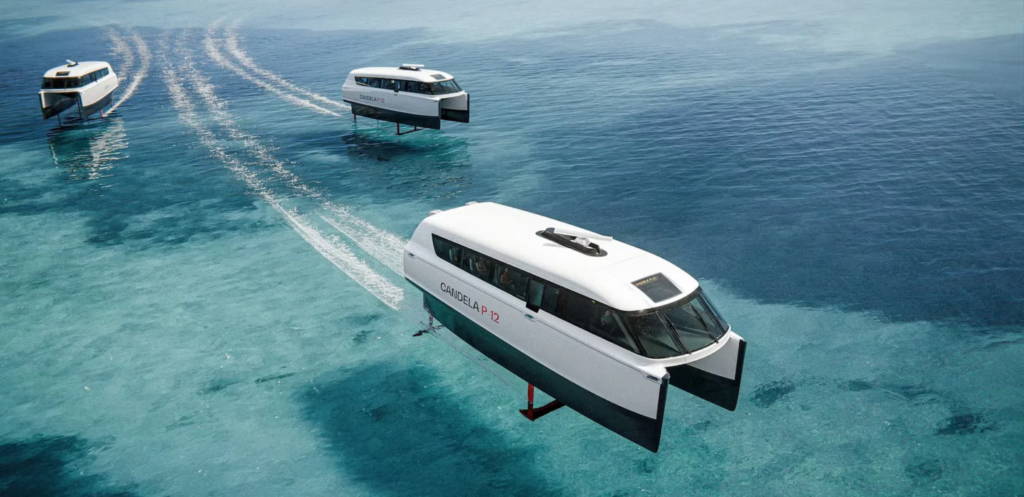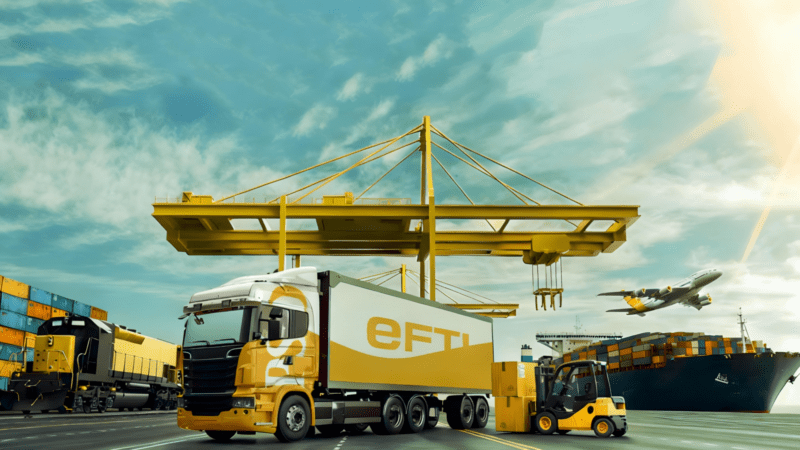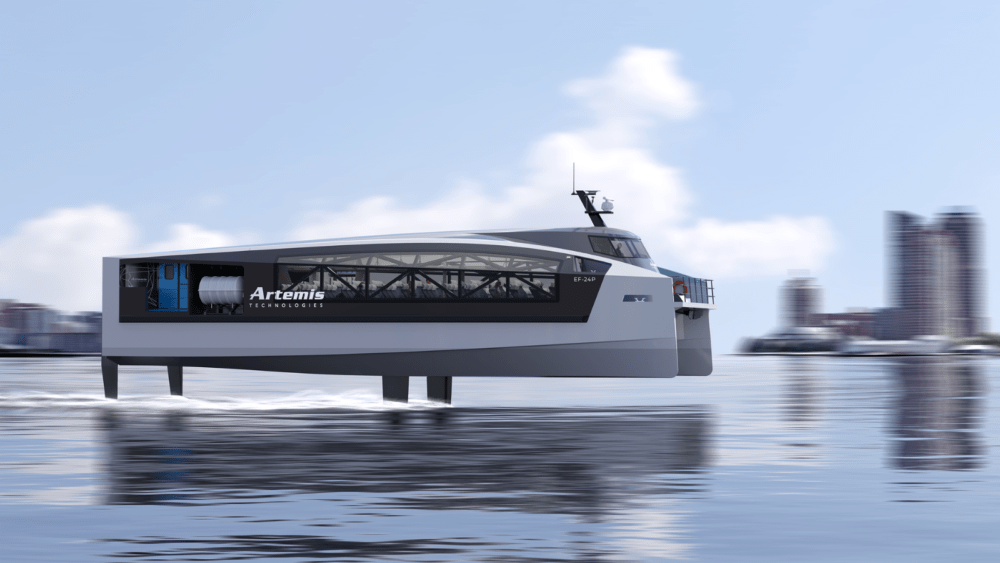
Urban water mobility for a sustainable future
How electric water transport is transforming coastal and river cities.

Carlos Martín is the Manager of the Ports and Maritime Transport Consultancy Area at IDOM.

Many cities and urban agglomerations have developed next to bodies of water -seas, oceans, rivers and lakes- generating transportation needs and opportunities on their waterfronts and shores.
Aquatic mobility can be defined as an urban or regional transportation system that facilitates the movement of people across water, connecting areas that would otherwise be isolated. In addition to boosting leisure and tourism, it naturally contributes to the blue economy, an economic model based on the sustainability of marine and river resources.
In a context of growing environmental awareness and the urgent need to reduce emissions globally, aquatic mobility takes on a strategic role by incorporating a sustainable approach. This system is presented as a tangible example of energy transition in transportation and navigation, making it a political advocacy tool adopted by numerous cities and regions in recent years.
When thinking of urban mobility on water, it is inevitable to recall the iconic Venetian vaporetti. The first of these, the “Regina Margherita”, began operating on the Grand Canal in 1881, breaking the monopoly of the gondoliers in transporting people in Venice. However, the vaporetto concept was an adaptation of the Parisian bateaux-mouches, introduced in response to a tender by the organizers of the 1867 Universal Exposition to improve river service in the city of Paris.
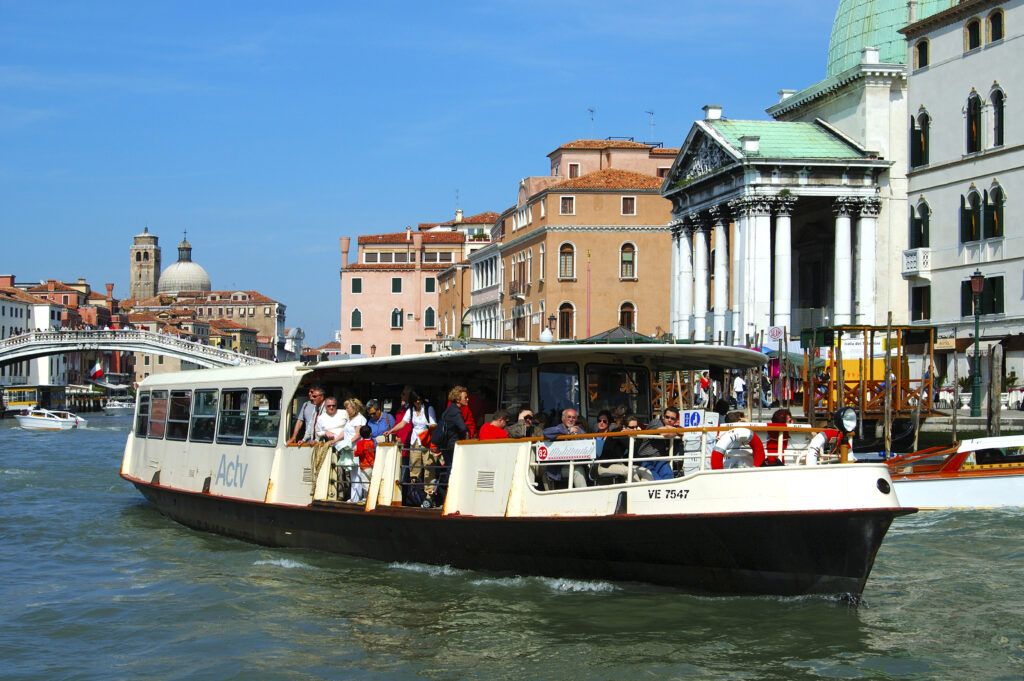
Technical and operational aspects
A complete water transport system usually has a small number of routes. Where these cross a body of water, they tend to be circular or triangular, with few intermediate stops.
On the other hand, linear routes that follow the course of a river or waterfront tend to include more stations, although the distances between them are short. Navigation speed is key in regular transport services, where efficiency is a competitive advantage. On the other hand, on tourist or leisure routes, speed may be lower, as the focus is on enjoying the experience and the scenery.
In the planning stages, when opting for an electric water mobility system, it is necessary to consider additional factors: cruising and maximum speed limits, realistic range and passenger capacity. These specifications will allow calculation of cycle times, service departure times, quick recharges required during operation, as well as the location and capacity required for electric chargers.
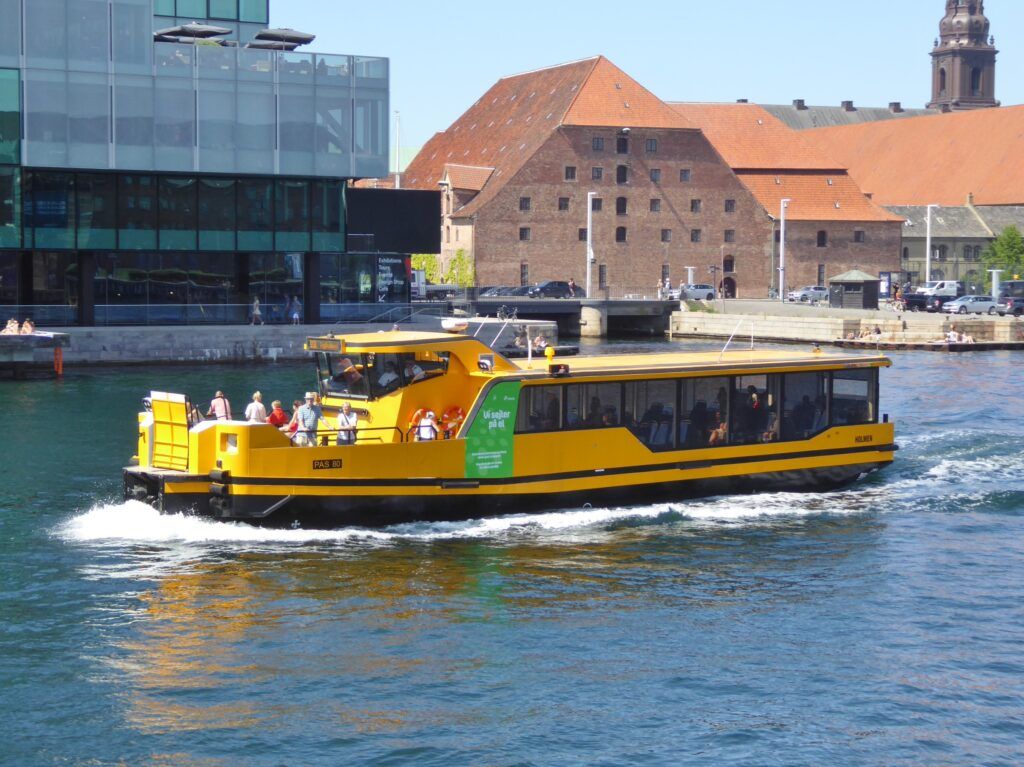
Planning and management
Unlike other maritime transport systems, such as regional ferries or short-distance transport, the management of a water mobility system is similar to that of other modes of public transport.
It is usually led by a transportation administration or local government entity. During planning, key aspects such as vessel ownership, service responsibility, and infrastructure development, operation and maintenance must be defined. Authorities may choose to design and procure their own vessels, delegating operation through concessions. This ensures control over design and finishing, but may limit the competitiveness or interest of operators. On the other hand, the development of terminals is usually carried out by public works entities, while their maintenance is outsourced to specialized companies.
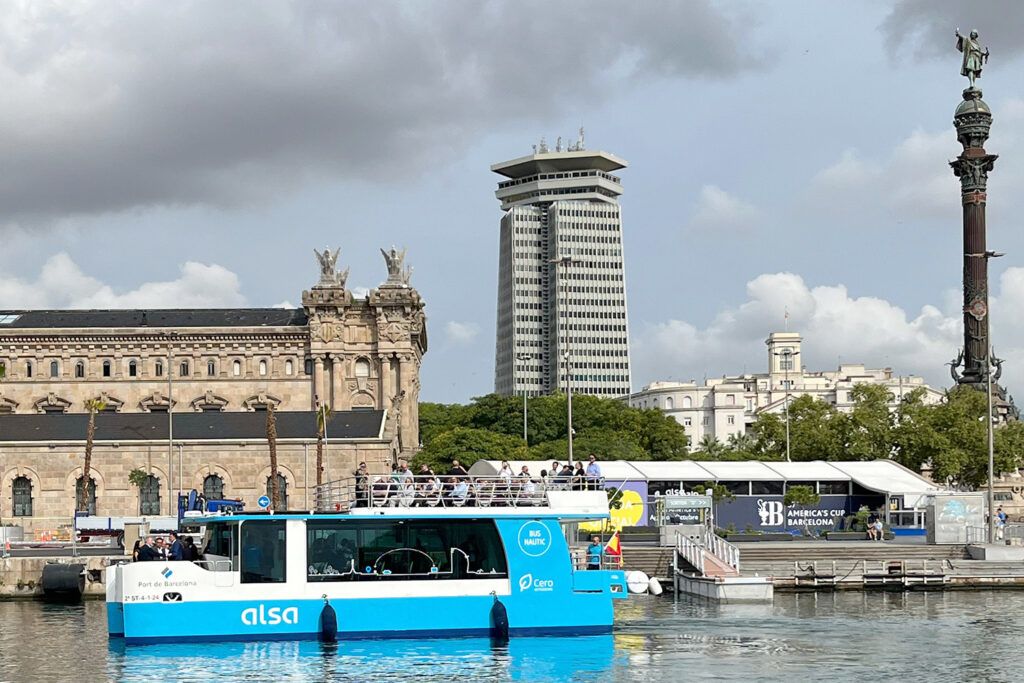
Challenges and opportunities
Although its implementation offers great opportunities, it also faces significant challenges. It is not a high-capacity mass transit system, and the cost of the vessels can be high, especially if sustainable solutions are chosen. This may result in a high cost per passenger, which could require subsidies or adjustments to the management model.
In addition, the supplier market for these vessels is limited, and delivery times can be long, especially for customized designs. As for intermodality, although terminals can be located near subway and bus stops, or include shared micro-mobility points, achieving the same fluidity as other modes of transport remains a challenge.

Case studies and technology trends
In recent years, several transportation systems have been developed that are remarkable for their sustainable and technological approach, some examples of which are shown below:
- One of the most recognized is Copenhagen, which operates a fleet of electric port buses. The waterbus service was already operating since 2000, but from 2020 it started to progressively replace its fleet with 100% electric boats. These new waterbuses cruise at a speed of 9 knots, with a capacity of 80 passengers. They are recharged overnight at various recharging points located in the terminals. The system currently has 3 operational routes and 11 stops.
- In Barcelona, in July 2024, on the occasion of the America's Cup, the Bus Nàutic was launched, a water transport service operated by two 100% electric catamarans powered by solar energy and electric recharging. The route connects the Drassanes and Llevant docks, in a journey time of approximately 10 minutes, with frequencies of between 15 and 30 minutes and a minimum of 12 hours a day. The service is currently concessioned to a private operator and the expansion of the network with a second line or new stops is being evaluated.
- Stockholm began operating its first electric ferry, the Nova (Candela P-12), on route 89 in October 2024. This 12-meter catamaran is 100% electric and uses hydrofoils to cruise at a speed of 25 knots. During the winter, it operates 3 full trips per day, with a planned expansion to 9 trips in the summer, including the second vessel.
- In August 2024, Candela signed an agreement to supply 8 units of its P-12 model to the NEOM project in Saudi Arabia. These vessels will be part of an ambitious regional sustainable mobility network, designed to connect various points along the 500 km coastline and several archipelagos, boosting zero-emission mobility.
- In February 2025, Artemis Technologies signed an agreement with Delta Marine to manufacture a 100% electric ferry with a capacity of 150 passengers, using hydrofoils and reaching a maximum speed of 36 knots. These vessels will operate in the Puget Sound in Washington State (USA). In addition, Artemis debuted its Escape model, a luxury water cab at the America's Cup in Barcelona, designed for daily commuting and private travel.
- The Watertaxi Rotterdam network, which connects the cities of Rotterdam and Schiedam, has 50 boarding points. Watertaxi Rotterdam aims to achieve a zero-emission fleet by 2030. So far, it has introduced seven electric boats from Alumax Boats, which cruise at 13.5 knots. In August 2022, the operator also introduced the world's first water cab powered exclusively by hydrogen, with a 12-passenger capacity and a 9-hour range.
Technologically, two main trends stand out: autonomous or automated navigation, which optimizes routes and reduces operating costs, and the use of hydrofoils, which improve the efficiency of electric motors.
Examples of autonomous vessels include Callboats' CAT 10L in Helsinki and the VERNE concept design for autonomous and sustainable aquatic mobility. Companies such as Artemis Technologies (with the EF-12 and EF-24 models) and Candela Boats (with the P-12) are leading the development of small passenger vessels with hydrofoil technology.
As for propulsion systems, battery electric motors are the most common, although hydrogen fuel cells are also being tested, as in the case of water cabs in Rotterdam.
In addition, complementary systems based on solar or wind power are becoming increasingly common, reducing dependence on the main fuel. An example of this trend is SOEL YACHTS' passenger boats, especially the Shuttle 14 and Shuttle 16 models, which are powered by electric motors and solar panels and have been operating in French Polynesia since the end of 2020.
Conclusion
Urban water mobility is an attractive option for cities located by the sea, rivers or lakes. It is currently gaining popularity thanks to the emergence of electric or zero-emission watercraft, which offer a sustainable alternative to conventional urban transport.
As propulsion and autonomy technologies continue to evolve, water mobility is expected to play an increasingly important role in the development of more sustainable and connected cities.


